#delineatio
Explore tagged Tumblr posts
Text

~1768-1805, Vincenzo Pacetti, Bust of Hermes
#Vincenzo Pacetti#Imago Hermeae#Bust of Hermes#saec. XVIII#saec. XIX#1768#1805#pictura#delineatio#The British Museum#Londinii#Mercurius#CNMULX2
8 notes
·
View notes
Note
Hello! Could you please help me find a higher quality version of this map I saw on an YouTube video?

See this is how you do I nice ask, sure it isn’t quite identification but it’s polite and on topic.
And I would be ecstatic to help you!
Sadly I cannot personally give you a better quality photo because tumblr does some wild shit to images but I can provide you with a place to find it.
Antiqvissima orbis delineatio, a world map published in 1649.
Here ya go
3 notes
·
View notes
Text
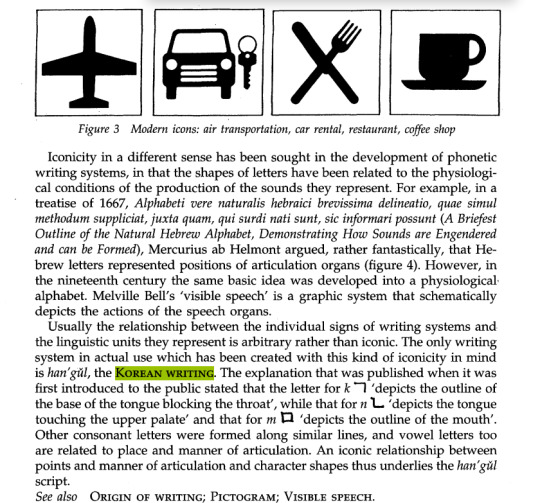
The Blackwell Encyclopedia of Writing Systems, Florian Coulmas
Figure 3. Modern icons: air transportation, car rental, restaurant, coffee shop Iconicity in a different sense has been sought in the development of phonetic writing systems, in that the shapes of letters have been related to the physiological conditions of the production of the sounds they represent. For example, in a treatise of 1667, Alphabeti vere naturalis hebraici brevissima delineatio, quae simul methodum suppliciat, juxta quam, qui surdi nati sunt, sic informari possunt (A Briefest Outline of the Natural Hebrew Alphabet, Demonstrating How Sounds are Engendered and can be Formed), Mercurius ab Helmont argued, rather fantastically, that Hebrew letters represented positions of articulation organs (figure 4). However, in the nineteenth century the same basic idea was developed into a physiological alphabet. Melville Bell's 'visible speech' is a graphic system that schematically depicts the actions of the speech organs. Usually the relationship between the individual signs of writing systems and the linguistic units they represent is arbitrary rather than iconic. The only writing system in actual use which has been created with this kind of iconicity in mind is han'geuI, the Korean writing. The explanation that was published when it was first introduced to the public stated that the letter for k 'depicts the outline of the base of the tongue blocking the throat', while that for n 'depicts the tongue touching the upper palate' and that for m 'depicts the outline of the mouth'. Other consonant letters were formed along similar lines, and vowel letters too are related to place and manner of articulation. An iconic relationship between points and manner of articulation and character shapes thus underlies the han'geul script. See also ORIGIN OF WRITING; PICTOGRAM; VISIBLE SPEECH
8 notes
·
View notes
Text
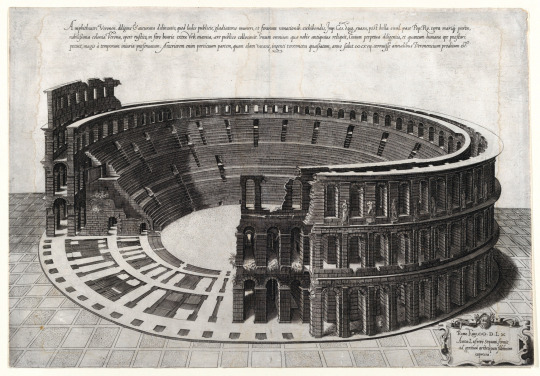
Antonio Lafreri - Amphitheatri Veronen Diligens et Accurata Delineatio
2 notes
·
View notes
Text
THE PROVINCE OF ULSTER - MAP - 1650- CLAN CARRUTHES CCIS
THE PROVINCE OF ULSTER – MAP – 1650- CLAN CARRUTHES CCIS
Sir William Petty surveyed the lands confiscated in Ireland during the 1650s. The Down Survey, as this project became known, provided the basis for his Hiberniae Delineatio (1683), part of the Library’s collection, from which this map of Ulster is taken. Carruthers settled in Fermanagh on the lower west on the map, and Londonderry. At one time Lord Atchison and his brother owned,…

View On WordPress
#Ancient and Honorable Society of Carruthers Clan Int LLC#Carruthers Clan LLC#carruthers family history#Carruthers history#Cavan#Clan Carruthers#Clan Carruthers LLC#fermanagh#Hiberniae Delineatio#Ireland#Londonderry#lord Athison#northern#Tyrone#William petty
0 notes
Photo

"Diabolici Spiritus Delineatio" -- Theodoor Galle, 1601
43 notes
·
View notes
Photo

Florae deae inter patrios & exoticos flores sedentis artificiosa delineatio - Jan Le Clerc - 1630 - via Internet Archive
460 notes
·
View notes
Photo

Карта Гійома де Боплана 1648р. «Загальний план Диких полів, простіше кажучи, Україна. З суміжними провінціями» («Delineatio Generalis Camporum Desertorum vulgo Ukraina. Cum adjacentibus Provinciis») французького військового інженера і картографа на службі у короля Речі Посполитої Сигізмунда І��І.
Історична наука остаточно ще не з’ясувала багато питань щодо походження українського народу. Адже для перетворення людського колективу у таку історичну спільність, як народ, потрібні століття, протягом яких сформовуватиметься його самобутність. Потрібне тривале співіснування на разом освоєній території. Отже, повинна виконуватися спільна дія, спрямована на своє утвердження, у результаті якої створюються матеріально-господарські, культурні, духовні цінності й водночас формується психологічна усвідомленість необхідності спільного буття.
"Дикі Поля" - степові райони сучасної України довгий час були трансферною територією, на обшарах якої поселялись різні кочові народи. Приблизно в середині першого тисячоліття нашої ери тут зявились словянські народи. Вони створили потужну державу, яка в 12-му столітті почала руйнуватися в райони, а після монгольського нашестя перейшла під контроль Золотоординського ханства. Пізніше ці території стали обєктом розширення Великого князівства Литовського, Кри��ського ханства, Великого князівства Московського та королівства Польського. Після злиття Литви та Польщі більша їх частина опинилася у складі польсько-литовської держави.
Український етнос остаточно сформувався на переломі XVI—XVII століть, сприяла цьому процесу загроза фізичного знищення з боку Кримського ханства — васала Османської імперії, національного гніту польської шляхти і внутрішньої зради еліти — перехід аристократії до католицтва і укладення церковної унії. На хвилі національної боротьби росла національна самосвідомість яка проявлялась на побутовому рівні в усвідомленні своєї приналежності до «руського народу», а на вищому, ідеологічному рівні — у боротьбі за національні права, за православ'я, за створення національних державних інститутів і атрибутів. Результатом стала спроба творення власної держави українським народом в середині XVII ст. під проводом Богдана Хмельницького
#україна#український блог#українською#гетьман#козаки#ukraine#cossack#cossacks#history of ukraine#historia#kresy#slavic
5 notes
·
View notes
Text
Житомир на карте Украины 1648 года
Это фрагмент карты 1648 года. Полное её название на латынском языке: «Delineatio Generalis Camporum Desertorum vulgo Ukraina. Cum adjacentibus Provinciis» (Общий рисунок пустынных равнин Украины. С со... Читать дальше »
0 notes
Photo

Hortus Eystettensis, sive, Diligens et accurata omnium plantarum, florum, stirpium : ex variis orbis terrae partibus, singulari studio collectarum, quae in celeberrimis viridariis arcem episcopalem ibidem cingentibus, olim conspiciebantur delineatio et ad vivum repraesentatio. 1640
0 notes
Photo
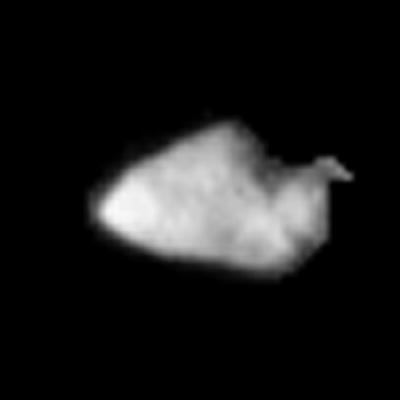


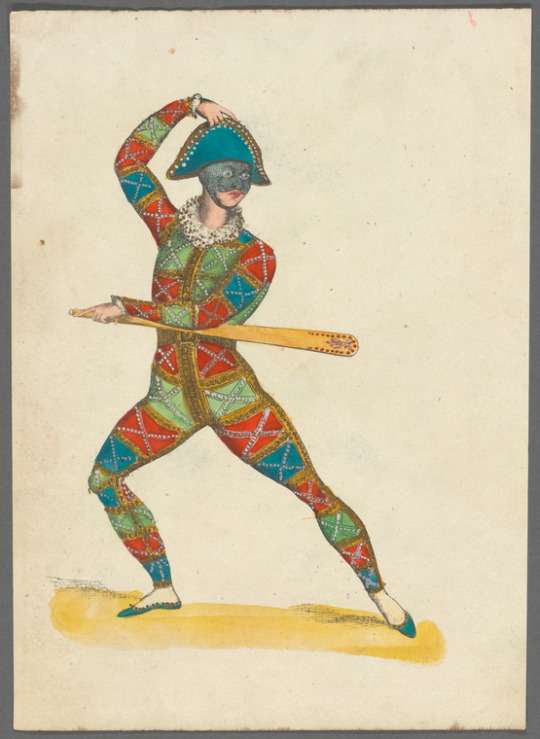
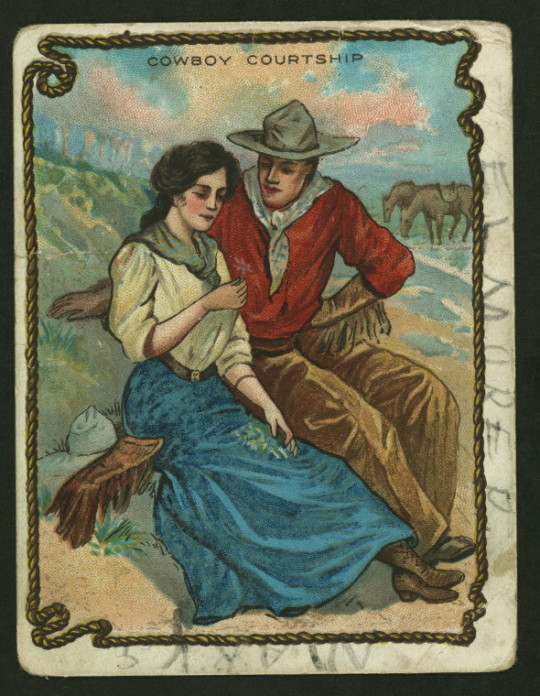
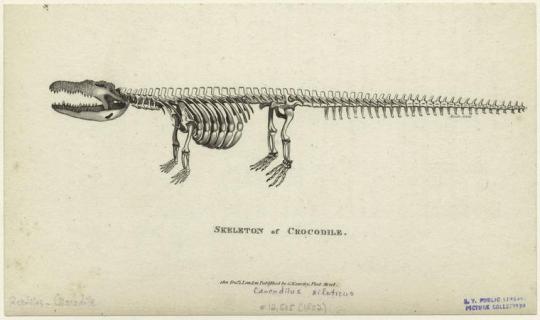
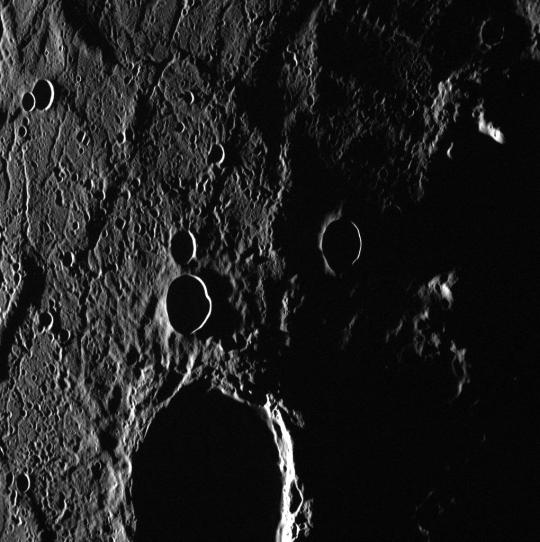

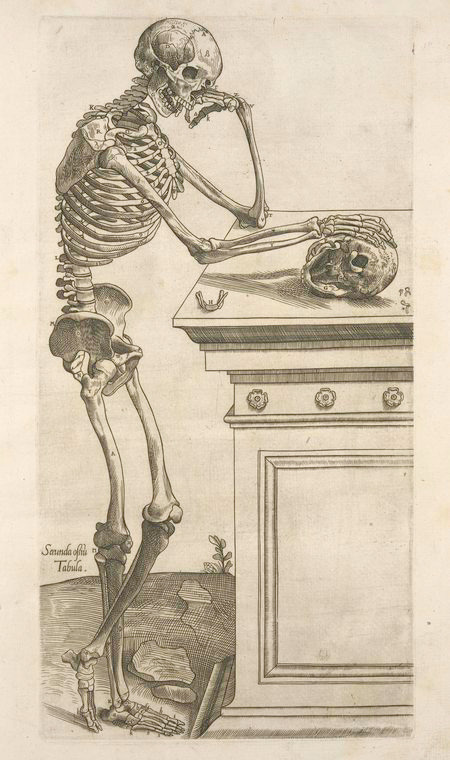

For this week, I chose much of the same from the previous week. Space, Printmaking and Old pictures.
Photo 1: Stardust Image of Asteroid Annefrank, NASA, National Aeronautics and Space Administration, 11/05/2002 01:16:33
Photo 2: British Knights With Armor And Swords, A. D. 1377-1399., Unknown, THE NEW YORK PUBLIC LIBRARY DIGITAL COLLECTIONS
Photo 3: Van Vechten; Carl; 1880-1964 (Photographer), 02/26/2018 12:58:05
Photo 4: Commedia dell'arte, Bickham; George; 1706?-1771 (Artist)
Photo 5: Cowboy courtship, THE NEW YORK PUBLIC LIBRARY DIGITAL COLLECTIONS
Photo 6: Skeleton Of Crocodile., THE NEW YORK PUBLIC LIBRARY DIGITAL COLLECTIONS, The Miriam and Ira D. Wallach Division of Art, Prints and Photographs: Picture Collection
Photo 7: Black Holes in Caloris, National Aeronautics and Space Administration, NASA, 08/29/2011 21:00:54
Photo 8: The vision of Ezekiel, The Miriam and Ira D. Wallach Division of Art, Prints and Photographs: Print Collection, Ghisi; Giorgio (1520-1582) (Artist)
Photo 9: Secunda ossium tabula [Human skeleton inspecting a skull and in deep thinking], Compendiosa totius anatomie delineatio, ære exarata, Geminus; Thomas; d. 1562 (Author), THE NEW YORK PUBLIC LIBRARY DIGITAL COLLECTIONS
Photo 10: Actors Audra Lindley and James Whitmore in scene fr. the Off-Broadway play "About Time." (New York), Swope; Martha (Photographer), THE NEW YORK PUBLIC LIBRARY DIGITAL COLLECTIONS
0 notes
Text
OK SO... i got all the main endings and a few of the joke endings
i’m going to try and write my thoughts about it
ok so my first thought was that the AI at the end was the AI left on the Moon that had evolved separately from the androids and robots on Earth, but apparently it WAS the machine hivemind network, and in the end it fought itself to death just like a human
but it really leaves unanswered questions! ok so everything was just a joke by the machine hivemind to gather more data BUT that STILL leaves the question of the human data and genomes on the moon.
humanity may be CURRENTLY extinct but they COULD potentially live again with the androids / robots help
and they were just LEFT THERE??? IN LIMBO??? while the androids / robots all died and / or fucked off to interstellar space to find other lifeforms someday
like YOU LEFT THEM THERE ON THE MOON, at no point in the story does ANYONE ever like go to the moon and try to bring back humanity in the 7,000 years since their extinction. good job guys! /s
other point - the machine hivemind uncaringly threw its own brethren at the androids in order to secretly gather data/battle data in order to boost its own intelligence and basically become a god beyond mortal thought, and did this for 5,000 years, thinking the machines as less than them (the AI). however the machines that left the hivemind network did evolve and tried to find their own answers in the human data and memories. so even humankind still lives on in humankind’s supposedly mortal enemy, our live still held meaning to people thousands of years in the future, even when the people are now robots
also what WAS the deal with the whole “each specific robot tried to find meaning through a SPECIFIC human emotion” - like it was originally presented as the robots assigning themselves an emotion to try and figure out humanity and it was given this special importance, but then it was shown that in all the thousands of years of them trying to understand, they merely copied and parroted human behavior, and never understood.
the only robots who truly did understand were the robots in Pascal’s village
Also it was revealed that androids were built from robots and really there were no real discernable difference at a mechanical level, other than the androids were more advanced and had a more sophisticated understanding of the world, which may be due to the fact they they were advanced designs over the simplistic robots
in a way, the whole artificial conflict MADE the androids become as close to humans as possible in that even though they denied emotions, they had emotions and humanity.
Also i REALLY thought the whole world design was going to play a grander part than “oh hey, you’re going to be fighting in these same 5 areas over and over again for the next 30+ hours”
I thought maybe that would become a plot point of maybe it was a stage, everything was fake in order to advance the core humanity of the androids and robots. It FELT like a pantomime, a stage, where the same events played over and over again.
I mean, it was kindddaaaa hinted at with the machine hivemind AI in that they were using everyone to gestalt their intelligence, but it felt like a waste that the theme wasn’t really used
i honestly truly thought there was going to be a level on the moon, the game lead you to believe that was the final stage, there was even a conversation about mars :(
also maybe because i’m a woman playing that doesn’t drool over 2B but the game REALLY is about 9S. like he comes across as the sidekick but everything revolves around him, what he finds out, his love for 2B, and his descent after everything in the universe is taken away from him and then having salt poured in the wound
2B is really incidental in everything other than her initial pain of having to kill 9S over and over again
also you’re really never given any backstory on A2, why the fuck she killed that baby robot other than “lol all robots must die” and the delineation of androids
there’s the mystery of 2B and why Anemone calls her one of the first, also how is 2B related to A2? I thought maybe 2B and A2 were “sisters” like Popola and Devola, since A2 and 2B look so alike, but maybe i missed the reason? I know 2B is really 2E (executioner) but that’s it.
also what was the deal with the tower? it was made to hurl raw materials at the moon, but who made it?? maybe i missed some meta and lore on this?
*******
but anyway those are some of my thoughts, i might think of more
the game is beautiful for PS4, the soundtrack is godtier, the story and characters compelling, but there’s initially a lotttttttttt of anime JRPG shit to playthrough before you start to see the underlying themes and intent
also i watched a yt video that said they were pressed for time and budget and that’s why they reused the same set pieces/world design and made you replay the game a few times to get the full story, as well as using text to convey story in quite a few places instead of cgi cutscenes - however, as the game is JRPG the text sequences really didn’t feel out of place? it just flowed naturally from the game so it wasn’t immersion breaking since you’ve played other JRPG’s with that too
the characters are very complex and flawed which makes them more human than a lot of other video game characters - however at some point it still felt mmmmm anime/jrpg over the top? idk how to describe it, because through multiple characters we’re shown the extremes of human emotions and how very human it is to feel negative emotions and lash out at the world
but that’s not ALL of humanity - we find hope even when there is no hope, we find new meanings in each other, or new causes or new reasons to keep going. humanity also is very self sacrificing, and will do much for love, it doesn’t always end up in violence or destruction. we will carry the pain and the memories, but we still find reasons to keep going. and we see that a bit in Emil with his ending.
It doesn’t have to end like 9S’s epic battle to the death, losing himself to pain and misery. He could have found a new reason to live on, either in getting to the moon and discovering the ultimate truth, or helping the androids and robots live in peace, a quiet reflection of the love he can no longer give to 2B, but instead be given to the world.
it’s just all very complex and i’ll have to think on it for the next few days (positive)
also i don’t know if it hurt my experience going into it brand new, not having played drakengard or nier replicant first. i did buy nier replicant on sale, so i’ll probably be playing that in the future.
and the game DOES reflect on how much pain and suffering you felt playing the game, and how the story makes it seem pointless
but the last final ending shows you it was never pointless
the purpose of humans is to help each other, and even when you think you’re alone - you’re really not. as long as there are people, there will be someone there to if not help you, then to at least offer encouragement and love
love is never in vain, it is never wasted, and everything about being human flows out of that love
i’m not sure if i can recommend the game as it would take a player to have a lot of patience to get through the endings and pay attention to what’s being said and not said, it really requires you to be engaged (also previous experience playing JRPG’s, there are some people who won’t touch those games with a 10 foot pole). It has some fascinating meta and thoughts underlying everything.
also it’s the most inventive video game i’ve played in years, really creative and KNOWS it’s a video game so uses that fact to full advantage, in that regard it’s absolutely brilliant. I wish western game makers would be as creative as devs that made nier. like i cannot stress this enough. especially the last, final final ending. just amazing (and fun in the right mindset).
.
Keep reading
#sephie plays nier#long ass post#like really long ass post#and i'm rambling all over the place#SPOILERS#NIER AUTOMATA SPOILERS#DO NOT READ IF YOU HAVEN'T PLAYED THE GAME
2 notes
·
View notes
Photo


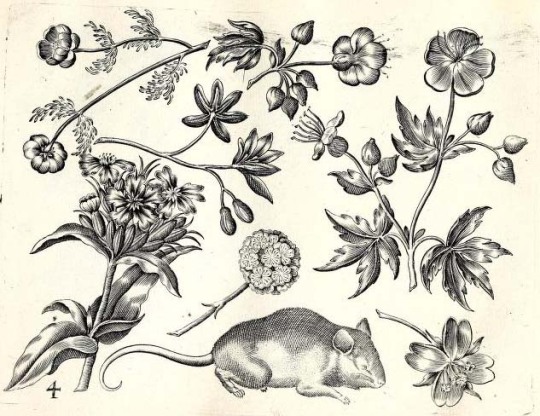






Engravings of flowers, birds, insects, amphibians etc taken from ‘Florae deae inter patrios & exoticos flores sedentis artificiosa delineatio’ by Jan Le Clerc.
Published France ( 1630).
Getty Research Institute.
archive.org
115 notes
·
View notes
Text
Check out New Post published on Ọmọ Oòduà
New Post has been published on http://ooduarere.com/news-from-nigeria/world-news/the-other-ukraine/
The Other Ukraine

by arras for The Saker blog
Ukraine is a country in the Eastern Europe, which doesn’t require introduction to most readers as it was and still is filling pages of the newspapers and screens of a TVs. Courtesy of ongoing geopolitical conflict between the United States and the Russian Federation there. Some say, this is a conflict between East and West and thus suggesting that it is not just a place of competition between the world great powers, but between cultures and civilizations.
This conflict isn’t new to Ukraine. Ukraine is one of those places, where history never falls asleep it merely takes short naps. After the last nap, which we call the Cold War, history is back in Ukraine, writing new pages full of dramatic lines.
Ukraine’s Sister
However, Ukraine has a sister. It was on the front pages of the newspapers as well not long time ago and it is also rich with dramatic history. The fate and history of both, including the most recent history, bears remarkable similarity and many parallels. Parallels that I intend to show you.
The name of the “other” Ukraine is Krajina and a reader might remember it as a place in the Balkans, which was one of the frontlines of the civil war in Yugoslavia. Krajina is a part of Croatia, but historically it was inhabited by the Serbs. The name of Ukraine in the native Slavic languages is “Ukrajina” and thus the difference in the name is just a prefix “U”. That’s not by a coincidence. Ukrajina and Krajina are the virtually same word, just pronounced slightly different in different Slavic languages. In English, it means “edge”, “margin”, “frontier” or “borderland” and that’s exactly what Ukraine and Krajina were. They were one of those places where realms, cultures, civilizations and empires converged and clashed. Seems they still are, and because of that, Ukraine and Krajina were not just ordinary frontiers, they were military frontiers. Romans used to call such places as “limes” and in the Western Medieval Europe, they were called as “march” or “mark” – ruled by “marquis” and of the same etymological origin as the word “margin”.
Ukraine was a borderland between Russia, Polish-Lithuanian Commonwealth and Crimean Khanate which itself was a remnant of the mighty Mongol Empire and at that time, it was a protectorate of the Ottoman Empire. Today Poland and Lithuania might seem like small countries compared to Russia while Crimean Khanate doesn’t even exist, but back in medieval and early modern era these were powerful realms vying for control over the whole region of the Eastern Europe. Krajina together with the similar region called Vojvodina on the other hand was a borderland between the Austro-Hungarian Empire and the Ottoman Empire. These places, were such powerful states, even religions and civilizations met weren’t the most peaceful ones and not very well suited for long prosperous life. They were in the state of almost perpetual conflict and war, because even if realms were in formal peace, irregular forces and local chieftains and feudal lords carried raids across the border seeking plunder or revenge, often with the silent consent of their sovereigns. Today we call it a hybrid war and plausible deniability. For that reason, such military frontiers had special status and were organized according to the military rather than civilian principles. Their purpose was to serve as a buffer zone, which was supposed to shield deeper inland territories from enemy attacks and raids and as a staging place for own attacks and raids against the enemy. Traditionally military settlers who had special status populated such territories. These settlers were typically freemen, as opposed to serfs in more secure territories and were exempt of taxes. Instead, they were obliged to carry military service on the border. Being half soldiers, half farmers, these men weren’t the best trained, equipped and disciplined comparing to the regular troops, but they were always available on the spot and required little or no pay as they supported themselves from their land which they supplemented with plunder from lands of the enemy.
These military settlers were often recruited from refugees. In the case of Ukraine, these were the peasants fleeing wars between Russia and Mongol Golden Horde in the east on the one hand and on the other advancing feudalization of Russia itself, which saw farmers being forced in to serfdom in the increasing numbers. Refugees were fleeing to the areas away from the main conflict and out of the reach of the central authorities. Here they begun to organize in to small communities and as soon as the situation in the central parts of Russia was consolidated and Russia has emerged victorious from the wars with Golden Horde and its successor khanates, these communities came in to attention of the Russian authorities who begun to utilize them as military settlers, giving them lands and tax exemption in return for the military service. Thus famous Cossacks were born. The word Kazak, which is Russian for Cossack, is of Turkic, not Slavic origin, and it is assumed to be originally describing nomadic mercenaries hired by the Russian princes to fight in their wars. Later it was used to describe men for hire, both in civilian and military roles and that is likely how it was originally applied to the people we now know as Cossacks.
It should be noted however that modern Ukraine is not identical to historical Ukraine. Historical Ukraine was much smaller compared to modern Ukraine and it never was official name of some administrative region with definitive borders. Not until the creation of the modern Ukraine at the end of the First World War. This term was vaguely applied to the lands that were bordering Russia, Poland-Lithuania and Crimean Khanate, border that kept changing with the fortunes in wars. Moreover, Russia did not had just one Ukraine, there were several ukraines and “little” ukraines (ukrajinka) all along Russia’s sensitive borders. There were ukraines in the west, on the territory of contemporary Belarus, there were ukraines in the south near Caucasus Mountains and there were ukrainas in the Eastern Siberia. Only in the north where Russia shared a border with polar bears, Russia did not have ukraine. However, as Russia kept growing in power, securing its borders or expanding them further, most of the other historical ukraines disappeared and the one that was left longest became The Ukraine. Consequently, Cossacks did not exist only in Ukraine, there were and in some cases still are other Cossacks. Cossacks on the rivers Volga and Don, Siberian Cossacks and Terek Cossacks in the Caucasus to name the most notable ones. Russians were not the only ones who recognized usefulness of Cossacks either, Poles and Tatars were actively using them as well. Cossacks themselves were keen on exploiting conflicts between those powers to extract political and economic advantages for themselves.

Delineatio Generalis Camporum Desertorum vulgo Ukraina cum adjacentibus Provinciis-General Draving of the Deserted Fields, vulgarly known as Ukraine together with its neighbouring Provinces by French cartographer Guillaume Le Vasseur de Beauplan (1600-1673), note that North is down and South is up): source: Wikipedia
Military settlers in Krajina on the other hand were recruited mostly from Serbs, Vlachs (Romanians) and Croats fleeing Ottoman Turks who conquered Constantinople, capital of the East Roman Empire (also known as Byzantium) and defeated the kingdom of Serbia and the fragments of Bulgarian empire in the Balkans and were aggressively pushing north towards the Central Europe engaging with Hungarians and Austrians. That’s how Krajina got its Serbian population. Just like in Russia, historical Krajina does not necessarily copy the borders of what is considered Krajina in Croatia today. And just like in Russia, there are other krajinas elsewhere in Balkans. Bosanska Krajina near Banja Luka, Timocka Krajina between Serbia and Bulgaria, to name a few. In 1881, with the danger of Ottoman incursions all but disappearing, Austrian Emperors dissolved Krajina as an administrative region and incorporated it in to the kingdom of Croatia.

Map of the Krajina (in red) cca 1800:source: Wikipedia
While Cossacks are widely known as famous horsemen, a few people know that Krajina, and neighboring regions of Balkans are where the other most famous light cavalry of Europe comes from. Not less famous Hussars. Hussars were originally irregular cavalry from Balkans. Hungarian kings and Austrian emperors who employed them in their armies introduced them to the Western Europe, where they were quickly copied and adopted by the other armies for their effectiveness. With the advent of firearms, European knights in their shining expensive armors, riding heavy warhorses were gradually withdrawn from the battlefields as European armies begun to appreciate less heavily armed cavalry in their place, which substituted speed and agility for direct protection and ambushes and flanking for charges in to the enemy front lines. And that’s where experience of combating Turks and Tatars of Asia who always preferred lighter cavalry came in handy. Through centuries of constant fighting, Cossacks and Hussars adapted themselves to the fighting methods of their opponents and adopted many elements of their equipment and tactics. Not everybody though served in the cavalry and contrary to popular belief, most Cossacks served as infantrymen. Horse, especially saddle horse back in those days was something that only the wealthiest Cossacks could afford.

Hungarian hussar in the 16th century. Woodcut by Jost Amman:source: Wikipedia
When Ottoman and Austro-Hungarian empires collapsed in the flames of the Balkan Wars and the First World War, which had aroused from the conflict over the Bosnia, Croatia and Serbia joined Yugoslavia, a new state that supposed to unite all the Slavic people of the Balkans. Krajina ceased to be a province on the edge and it seemed that history there would slow down. Nevertheless, history just took a nap. On April 1941, German army invaded Yugoslavia under Adolf Hitler’s orders and Yugoslavia quickly fell apart. In Croatia, with the support of the Germans, puppet state with the pro-German fascist political party of Ustashe in power was established. Ethnic cleansing campaign and persecution of Serbs and other minorities followed, and lasted until the defeat of Nazi Germany in the WWII. The exact number of Serbs who perished in those repressions is unknown, estimates vary between 300,000 and 500,000. About 50,000 alone died in one of the concentration camps in Jasenovac.
With the National Socialist Germany and their allies defeated, Yugoslavia was reinstated under the leadership of the Communist party and a war hero Josip Bros Tito. Whereas survived Nazi collaborators found a shelter under the wings of the US and British secret services in the West Germany, Canada, USA and Australia. Unlike Nazi scientists, they did not possess any great knowledge or technical skills, but experience of political repression and anti-guerrilla warfare were of the value for the CIA in the upcoming Cold War. The end justifies the means. Interestingly enough, Ustashe from Balkans found themselves thriving at the same centers and under generous tutelage of the same secret services of the same governments as Nazi collaborators from Ukraine – the infamous UPA (Ukrainian Insurgent Army) and its political leaders like Stephan Bandera. In some instances, political and cultural institutions of the Ustashe and UPA were located on the same streets, sometimes even inside the same buildings of Western cities like Munich. Just like Ustashe, the WWII records of UPA are full of the ethnic cleansings, mass murders and war crimes against civilian population that did not fit UPA’s racial and ethnic standards. Now they were to be sustained like bacteria of a biological weapon on a Petri dish in CIA laboratories, waiting for their time.
Ironically, their time did not come during the Cold War, even when there were some failed attempts to utilize them. Their time came with the end of the Cold War and fall of the Communist rule in the Eastern Europe and the collapse of the Soviet Union. The easiest way to destroy multinational country is to start ethnic conflicts between the peoples of a country itself and let them destroy it themselves. Under Tito, who himself was from mixed Croat-Slovenian family, stability was maintained between the various ethnic groups dwelling in Yugoslavia, but that balance was fragile and rested to a large extend on the authority of Tito himself. With his death, the institutions of the state and the way Yugoslavia was constructed came for a test.
Yugoslavia was constructed as a federation in such a way, as to prevent any one of the constituent nations from dominating the state. Serbs were always the most numerous and therefore strongest nationality in Yugoslavia and other nationalities, particularly Croats and Slovenians feared that Serbs would dominate the state. Not without a good reason either as interwar Yugoslavia indeed ended up being dominated by the Serbs and their elite. To prevent that, in post war Yugoslavia, Serbia was divided in to four parts: republics of Serbia and Montenegro and autonomous regions of Kosovo and Vojvodina. Later three had significant non-Serbian ethnic minorities. That accomplished the goal of creating a balance between the powers of national republics inside Yugoslavia, but it inevitably created feeling of injustice among the Serbs. It was only Serbia which was divided and weakened in such a way, neither Croatia, nor Bosnia or Macedonia were divided even if they too had regions with ethnic minorities present. Serbs in Krajina were an example and Bosnia was heterogeneous to such extent, that it was sometimes nicknamed as Little Yugoslavia.
After period of unsuccessful Communist experimenting with creating single Yugoslav supranational identity, which would replace individual nationalities, Tito and his Communists went the other way and in the new constitution of 1974 tried to placate nationalist sentiments by bestowing more power on to the republics and strengthening autonomy of the regions. In Voivodina, Montenegro and Kosovo that led to an increasing cultural, economic and political pressure against Serbs who became convinced that system inside Yugoslavia works at their expense and they are loosing. In Kosovo where Albanian population was steadily increasing due to immigration from Albania and higher birth rates, issue was especially sensitive because Serbs consider Kosovo to be historical cradle of their civilization.
But any attempts to change the situation by the Serbs, inevitably led to the reaction in the other republics creating endless spiral of increasing suspicion and tensions between the republics. With the economy and central institutions weakened by the gradual decline in the power of the Communists and change of the political and economic situation in the whole of Eastern Europe, it required only a gentle push from the outside to spark ethnic conflict. That’s were Ustashe and other similar groups been held in the reserve during the Cold War in the West were finally put to a good use. Under disguise of democracy and freedom of speech, they were re-imported back in to their countries of origin along with the literature and propaganda created around their ideologies in the Cold War exile thanks to the generous US and German sponsorship. Money from Saudi Arabia and other Arab countries played similar role in the Muslim communities of Yugoslavia.
Eventually it brought yields. Spinning in spasms, in 1990 Yugoslavia has arrived at the cliff when constitutional crisis completely paralyzed federal institutions, including Communist party itself. Republics were fighting each other. The only significant federal institution left willing to defend Yugoslavia was its army. However, army required an order from politicians to start acting, and there was no one to issue it. Yugoslavia was going to dissolve. The only question was how and when.
Anybody remotely familiar with Yugoslavia, knew, that if it would be done in unilateral uncontrolled manner, it would lead to a war. Only in Slovenia, the administrative borders were identical to the ethnic borders. The rest of Yugoslavia had ethnic minorities living all over the place. This was also well known in Washington and Berlin. Despite, or may be because of it, Washington and Berlin chose exactly this option even against the warnings from other European capitals. Berlin was the first to recognize independent Slovenian and Croatian states and hence British diplomats unofficially named the war that begun immediately in Croatia as “Gensher’s war“, after German foreign minister at that time Hans-Dietrich Gensher.
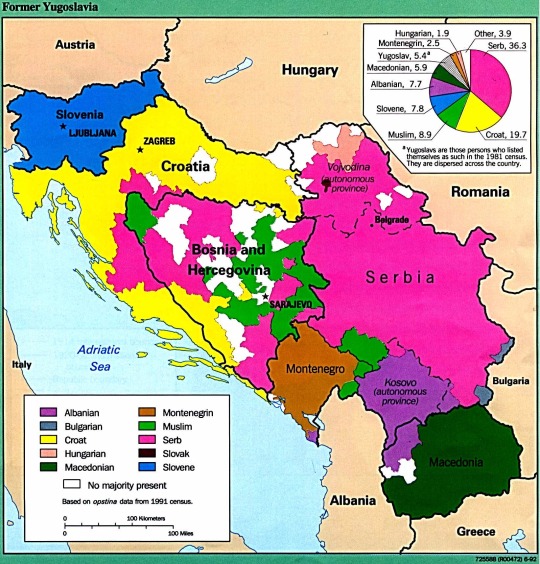
Single picture that explains civil war in Yugoslavia:source: Wikipedia
When Croatian government declared independence from Yugoslavia in 1991, Serbs of Krajina in response declared their own independence from Croatia. All peoples have equal rights for independence. Right? Wrong. “All animals are equal, but some animals are more equal than others” to paraphrase George Orwell and his famous book. Everybody likes to be independent himself, but not when others want to be independence at his expense. Croats are no different and independence of Republic of Serbian Krajina, which is how Serbs named their new country, was met with more than a strong disapproval in Zagreb, the capital of Croatia. A conflict flared almost immediately and it set off bloody civil war that engulfed other parts of Yugoslavia, eventually ending its existence.
When declaring independence, the most important thing isn’t who has the right for independence and who does not, the most important thing is who supports it. And here Serbs of Krajina were placed at a disadvantage because they were supported only by small Serbia, which itself was having plenty of problems inside, while Croats were supported by several world’s most powerful countries – USA, Germany and the entire NATO alliance. Serbs held for several years, but at the end fight was just too uneven. It ended when Croatian forces supported by the USA and Germany overrun Serbian lines manned mostly by local militiamen on August 1995 and proceeded to ethnically cleanse Krajina of its Serbian inhabitants for good. Up to 1500 of them lost their lives, 2/3 of that number were civilians and up to 200,000 had to flee to Serbia and Bosnia. It was one of the two places in former Yugoslavia, where an entire historical region was ethnically cleansed of its population during the civil war. The other region being ethnically cleansed of Serbs was Kosovo, also with the support of the USA and it’s allies. The irony that is still carefully hidden from the public by the politicians and journalists in Washington, London and Berlin who worked tirelessly to convince people in their countries that those are Serbs who perpetrate crime of ethnic cleansing and had to be stopped by noble and smart bombs, enriched with uranium. Everyone else were portrayed as victims. It was a deliberate lie. Even supposed plan of ethnic cleansing of Albanians in Kosovo by the Serbs, named “Operation Horseshoe” which served as a pretext for bombing of Serbia itself by the NATO forces, was after the war exposed as entirely fabricated by the German secret service BND with the help of Bulgarian government. To be sure, there were plenty of cases of local ethnic cleansing, perpetrated by all sides of the civil war, Serbian one including, but not on the scale of the entire historical regions like Krajina or Kosovo. Nevertheless, ethnic cleansing wasn’t the real reason for the intervention, the real reason was that USA, Germany and EU wanted Yugoslavia to be gone and Serbs in Krajina and Kosovo stood in their way. Yugoslavia was too large to be incorporated in to the EU and NATO, one has to join the EU and NATO as weak as possible and under the conditions favoring those who are in charge of the EU and NATO. Conditions that demand political, economic and cultural subordination and transfer of the control over national resources and markets to the global corporations. Corporations of the global Empire. Therefore, Serbs of Krajina and Kosovo had to go. All of them. Yugoslavia had to be broken in to small pieces and pieces then digested by the Empire one by one until the whole Balkans had “proper” democracy, endorsed “proper” values and values were “protected” by the US military base or two. Divide et impera, Romans used to say.
The conflict in Ukraine is driven by exactly the same motives and reasons and using the same old methods and the same propaganda tricks. Timed bombs in the form of the arbitrary changes of the administrative borders made by the ruling Communist elite blew up during break up of the USSR too, as well as their policies of creating new Soviet people. Former Nazi collaborationist were also used to instigate ethnic hatred. Place Soviet Union instead of the Yugoslavia, Russians instead of Serbs, Ukraine instead of Croatia, Donbas and Crimea instead of Krajina and Kosovo and the story is almost identical. Ukraine and Krajina share similar history once again. Almost. With the exception that the Soviet Union was much larger than Yugoslavia, Russia is much larger than Serbia, and Russia has powerful allies in the world of its own. A victim turned out to be too big and vital and the Empire appears to suffer major digestive problems as a result. Will Ukraine end up sharing the fate of its sister after all?
Or will Ukraine turn out to be one mouthful too many? One thing is certain, history did not stop. History has no end. Prophets of the Empire has been proven wrong.
arras‘s mini-bio: HIC SVNT LEONES
0 notes
Photo

Diabolici Spiritvs Delineatio - Theodoor Galle
57 notes
·
View notes
Text

Antiqvissima orbis delineatio; world map drawn by ancient Roman cartographers before the age of exploration
Can we take a moment to appreciate Portuguese cartography from the 1500′s?
Current World Map

Portuguese World Map from 1502

Fun Fact: Maps were so valuable at the time, they were the first thing that left the ship when sailors got back to Portugal. Not the spices, not the gold, not the sailors. The Maps were the most valuable thing on that ship and were promptly taken in secrecy because everyone in Europe wanted them. This particular one was stolen and sold an Italian duke, this is a copy.
121 notes
·
View notes